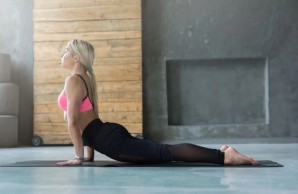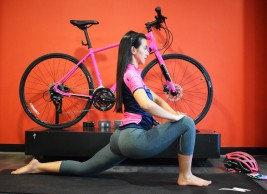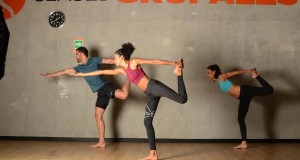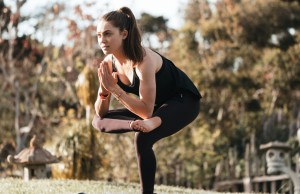Reasons to include yoga in your training
Complementary preparation is often overlooked by many cyclists who only think about doing their long rides or their series when it comes to training. However, activities like yoga can very easily fit into our training plan and help us to be much better cyclists. We explain what yoga can bring to you.

Become a better cyclist thanks to yoga
Traditionally, cyclists have been quite rigid in their preparation. The path to fitness consisted of spending many hours on the bike, the more the better. However, today this has changed. Just visit the winter concentration of any professional team to see how they dedicate their afternoons to other types of complementary activities such as exercising in the gym, doing specific core work with activities like pilates, stretching, etc. Among all these complementary activities, yoga is also included, a perfect complement that brings multiple advantages to the cyclist's training.
Perfect for active recovery
In cyclist training, recovery days often consist of a short ride of a couple of hours pedaling at a very gentle pace. However, many cyclists need that day to disconnect from the bike or do not feel like pedaling for a couple of hours without hardly getting warm on a cold winter day.
RECOMENDADO

25 cycling gifts ideas to get it right

When do helmets have to be changed? Do they have an expiration date?

Some reasons to stay away from the road in winter

The best apps for cycling and mountain biking

Black Friday 2025 cycling bargains: save on Garmin, POC, Maxxis and more

Black Friday Garmin 2025: the ultimate guide to choosing your GPS at the best price

Including a yoga session on these days allows us to introduce physical activity but of very low impact. An activity that also helps to stretch the muscles and work on joint mobility with gentle and chained movements. Besides, due to its own spiritual nature, yoga helps us to better understand our body so that we learn to detect small signals before they become a problem in the form of an injury: a small point of discomfort, a contracted area, a joint with less range of movement than another, etc.
Mental control
Yoga is an activity in which body and mind have to work in perfect harmony. With its practice, we learn to focus our thoughts on the different asanas that we are performing, keeping unwanted thoughts away so that they do not affect concentration.

A learning that, on the bike, is a powerful weapon to not come down when we are taken out of point and we are suffering to the limit on a port and our legs ask us to slow down the pace or we go through a moment of crisis and we have to keep those thoughts that ask us to go up gears and let ourselves go. Besides, yoga is an activity of recognized effectiveness in reducing stress which, without a doubt, improves our quality of life and our rest.
Improvement of flexibility
At a purely physical level, the main advantage that the practice of pilates brings is the improvement of flexibility, again, one of the Achilles heels of many cyclists. However, having good flexibility is something that allows us to hold the position on the bike more easily while we can resort to more aggressive placements that allow us to have better aerodynamics which, obviously, also has a direct impact on performance.
Breathing control

The correct performance of the different asanas during a yoga session involves synchronizing the breath with each of the movements. A synchronization that, when we are on the bike, we can transfer to the pedaling avoiding falling into hyperventilation when the intensity of the effort rises which, on the other hand, results in delaying that point where we are in agony.